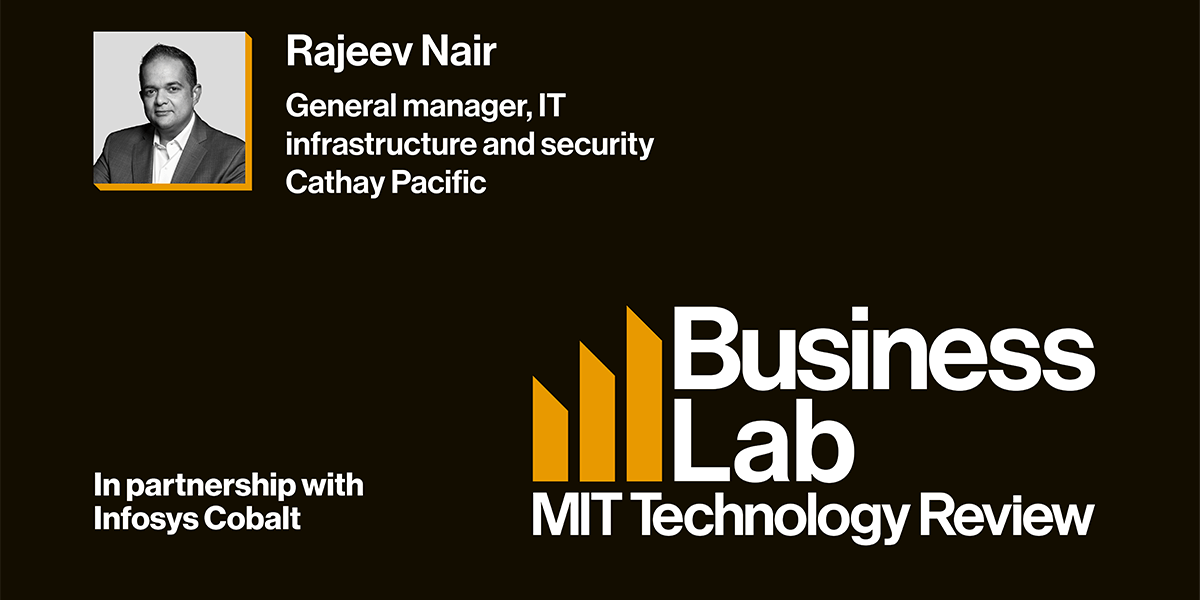Amidst an era where customer experience is pivotal to business success, Cathay Pacific is leveraging Digital transformation to improve service delivery and fundamentally transform operations.” (Source: Cathay Pacific)
Interview Summary: Rajeev Nair Discusses Cathay Pacific’s Digital Transformation
Megan Tatum interviews Rajeev Nair, General Manager of IT Infrastructure and Security at Cathay Pacific, about the airline’s transition to cloud technologies and the benefits it brings.
Key Points:
- Data Center Reduction and Green IT Practices:
– Cathay Pacific is relocating to a smaller, more efficient data center to reduce their carbon footprint.
– They are adopting green IT practices, such as using energy-efficient devices and virtualization, alongside basic measures like reducing monitor usage and implementing screen timeouts.
- FinOps and GreenOps:
– The integration of FinOps practices with GreenOps focuses on reducing CO2 emissions while optimizing cloud costs.
- Benefits of Cloud Migration:
– Agility and speed to market are the primary benefits; hardware provisioning time has been reduced from months to hours.
– Cloud technology allows for scalable resources, enabling quicker, customer-centered solutions.
– There’s significant capex reduction by not having to invest in legacy hardware, especially due to high labor costs in Hong Kong.
- IT Operations Transformation:
– The focus has shifted to agile handling of IT infrastructures and operations, adopting modern IT service management tools like ServiceNow.
– Emphasis on incorporating DevOps and DevSecOps practices into operations to enhance agility and security.
- Employee Upskilling:
– The transition involved extensive training for traditional IT teams to adopt cloud technologies, overcoming initial resistance by involving them in hands-on projects.
- AI Adoption:
– Cathay Pacific is leveraging various forms of AI, including conversational AI through their chatbot ‘Vera’ (handling 50% of inquiries), robotic process automation (RPA), and machine learning for operational insights.
– AI-powered systems are being integrated into public announcements at airports.
- Cybersecurity in Transformation:
– Rajeev oversees both cybersecurity and infrastructure, striving for a balance between rigorous security protocols and agile service delivery.
– Implementing DevSecOps allows developers to take ownership of security processes, creating a collaborative cybersecurity culture.
- Enhanced Customer Experience:
– The airline has transitioned to digital solutions for pilots, replacing paper with iPads for flight operations.
– The Customer 360 app empowers frontline staff to enhance passenger interaction through personalized service insights.
- Future Technologies:
– AI will continue to be a focus, alongside augmented and virtual reality (AR/VR) for enhanced training and customer engagement.
– VR is being utilized for cabin crew training and will be applied in marketing new products like business class seats.
Conclusion:
Rajeev Nair highlights the transformative journey Cathay Pacific is undergoing through cloud migration, innovative AI applications, and a collaborative approach to cybersecurity and operational efficiency. The integration of emerging technologies positions the company to enhance both internal workflows and customer satisfaction as they look to the future.
—
This summary encapsulates the core themes and insights from the interview, detailing the transformation journey of Cathay Pacific under Rajeev Nair’s leadership






